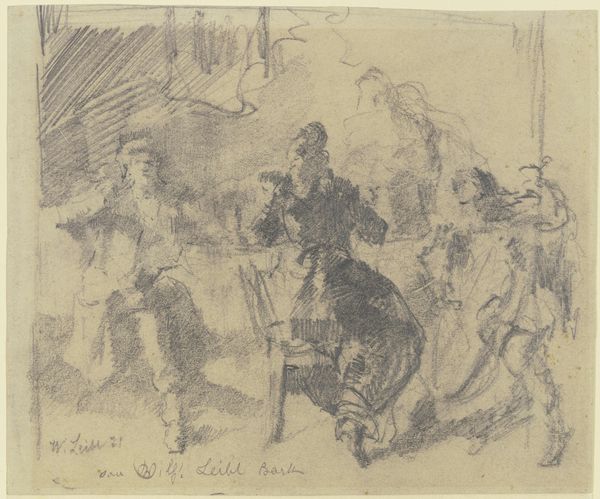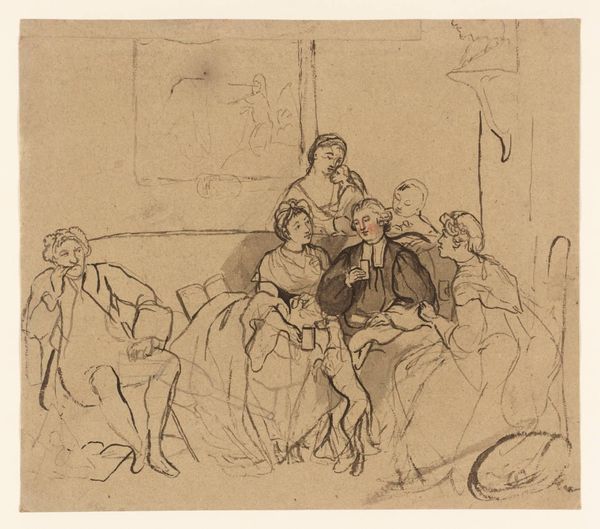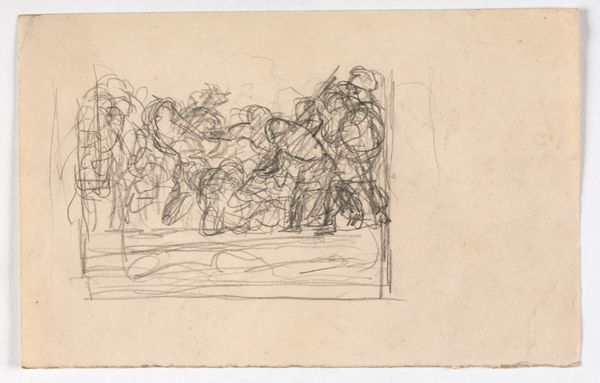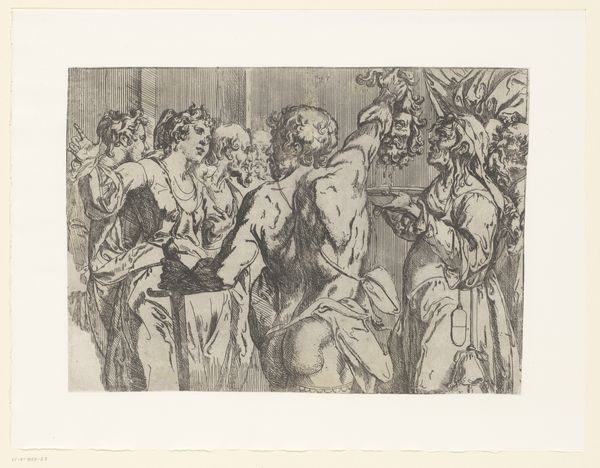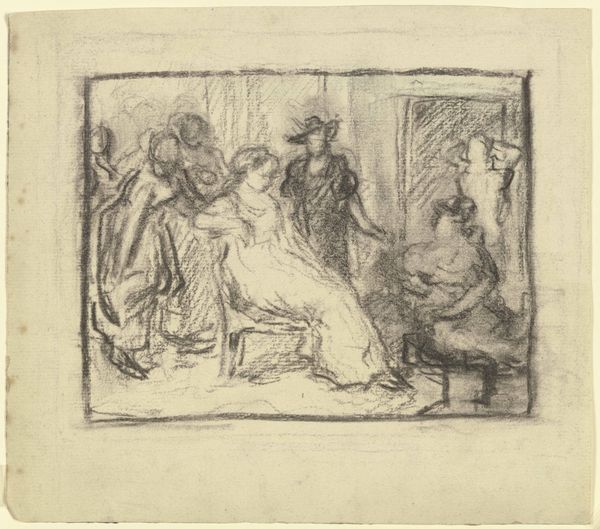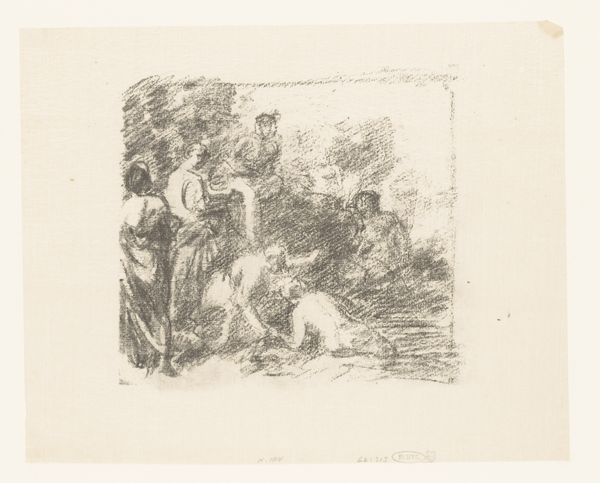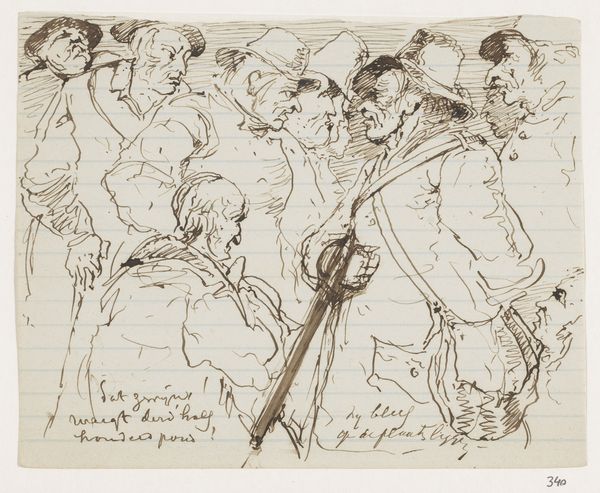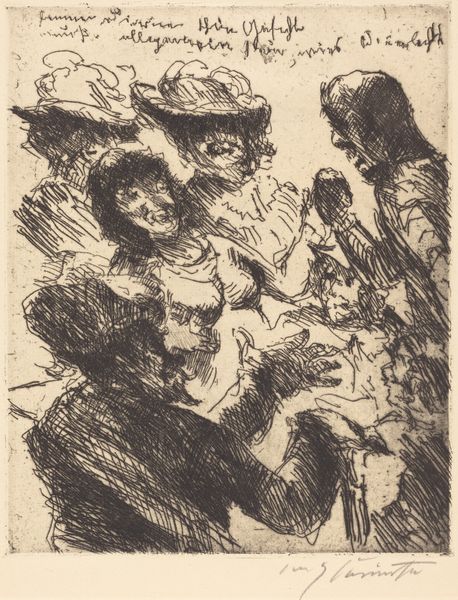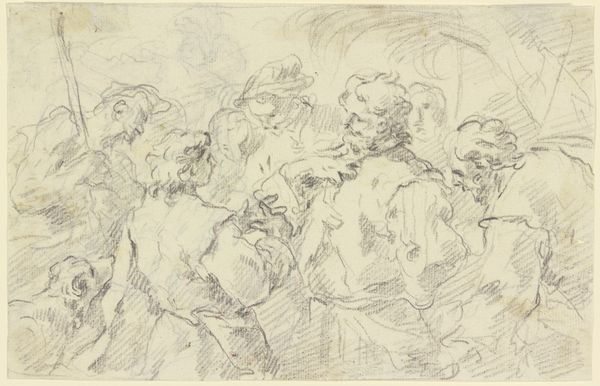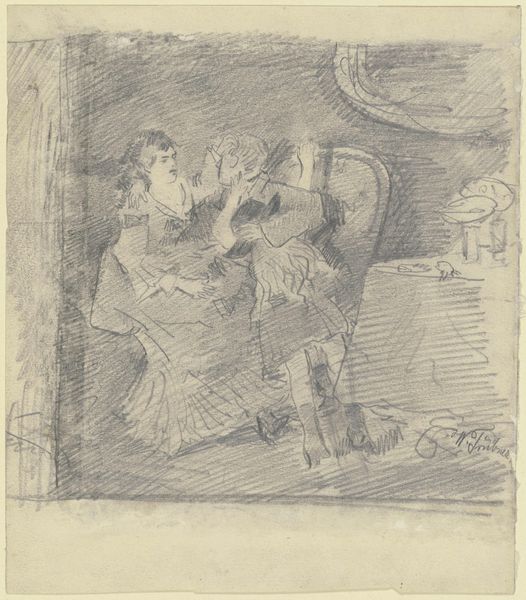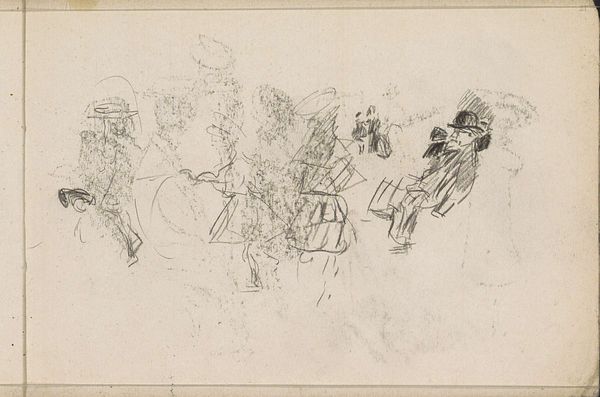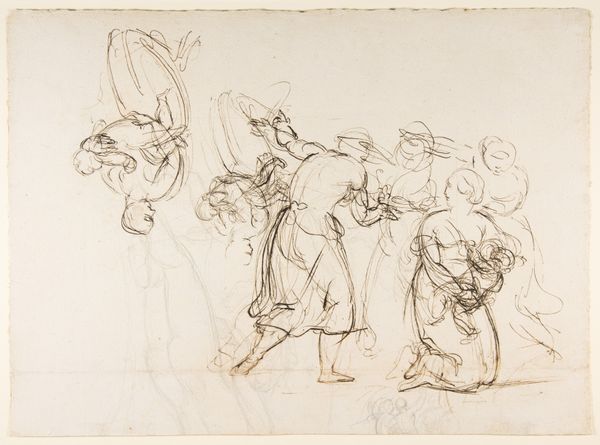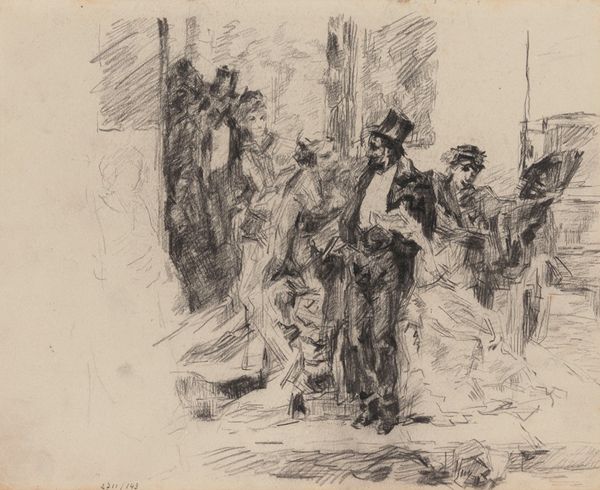
Copyright: Public Domain
Curator: Immediately, I'm drawn in by the energy, despite its monochromatic nature. There’s a flurry of movement in this pencil drawing. Editor: We're looking at "Entwurf zur _Tischgesellschaft mit Cellospieler_" by Wilhelm Leibl, created in 1871. It resides here at the Städel Museum. It's a sketch, a preparatory study if you will, rendered in pencil. Curator: I can practically hear the cello music and lively chatter of a gathering! It appears to be capturing a casual social atmosphere, possibly amongst family? Editor: Quite possibly. Leibl often depicted scenes of everyday life. I find it particularly insightful to see this preliminary work, exposing the underpinnings of how social scenes were represented in art of the period. How an artist chose to arrange figures within the context of newly formalized, stuffy bourgeois life says a lot about the societal perceptions that began taking form at this period. Curator: Agreed. Note how lightly he sketched the figures at the back compared to the dark shading of the garments at the foreground. You know, you can practically trace Leibl’s hand, the labor in the various techniques as he quickly modeled and then reworked each area as if considering different viewpoints or figure arrangements. Editor: This piece also feels tied to its moment—that moment being post-revolution Europe. Its subjects being ordinary people, its accessibility stemming from its drawing-based origins; I can't help but feel this drawing speaks to a larger shift toward accessible art at the close of the 19th century. The themes were down to earth but with sophisticated style, very romanticist in their outlook. Curator: You are right. The unfinished character almost lends a refreshing, transparent element which, oddly enough, is also very romantic! I've enjoyed pondering the labor, the materials and, indeed, the politics behind the romantic, the bourgeois, and the underpinnings of 19th-century figure studies. Editor: Yes, seeing how that era understood and visually portrayed social life has been incredibly informative and, in turn, speaks volumes to current societal understandings of "le beau monde," particularly with this drawing's raw immediacy.
Comments
No comments
Be the first to comment and join the conversation on the ultimate creative platform.
